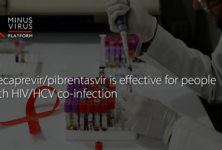More research is needed into how the virus may affect cerebral small vessel disease, a leading cause of cognitive decline.
 Even when people with HIV are doing well on antiretroviral (ARV) treatment, they are apparently more likely to have certain abnormalities in blood vessels in the brain that are associated with cognitive decline. Further research is still needed, however, to bring greater clarity to how fully suppressed HIV may affect such abnormalities over time and give rise to age-related disorders.
Even when people with HIV are doing well on antiretroviral (ARV) treatment, they are apparently more likely to have certain abnormalities in blood vessels in the brain that are associated with cognitive decline. Further research is still needed, however, to bring greater clarity to how fully suppressed HIV may affect such abnormalities over time and give rise to age-related disorders.
Researchers from the French ANRS group conducted a large, multicenter cross-sectional study, known as EP51 MICROBREAK, of 456 people with HIV older than 49 who were taking effective ARV treatment and had a CD4 count of at least 350. They used cutting-edge MRI methods to assess abnormalities of white matter in the participants’ brains to look for evidence of cerebral small vessel disease (CSVD), a leading cause of cognitive decline in the general population.
Dominique Costagliola, PhD, of the Sorbonne presented findings from the study at the 2017 Conference on Retroviruses and Opportunistic Infections (CROI) in Seattle.
HIV is associated with an increased risk of vascular disease (disease of the blood vessels), likely because of the chronic inflammatory state to which even well treated virus gives rise. Scientists are eager to determine whether HIV drives vascular disease in the brain in particular, possibly contributing to HIV-associated neurocognitive disorders (HAND).
Previous MRI-based research has found an association between HIV and abnormalities in the brain’s white matter, the regions of the organ that pass signals between neuron cell bodies located in the brain’s gray matter. Such white-matter abnormalities have been linked to CSVD as well as HAND.
In the MICROBREAK study, the participants were twice as likely to have CSVD compared with 154 HIV-negative control subjects despite the fact that those in the HIV-positive group were two years younger on average. The disparity was the widest among the youngest members of the study (50 to 53 years old) and narrowed so that participants older than 60 had similar CSVD rates regardless of HIV status. The people with HIV were also more likely to abstain from alcohol; 33.1 percent of those with HIV and 17.5 percent of those without reported never drinking.
Thirty-six percent of those without HIV and 52 percent of those with HIV had CSVD, including a respective 14 percent and 19 percent with severe CSVD.
The HIV-positive group had more risk factors for vascular disease besides living with the virus, including high blood pressure, cholesterol and triglycerides and a history of cardiovascular disease. But even after the researchers controlled for such factors, the apparent differences in CSVD rates persisted. Those with HIV were 2.3 times more likely to have CSVD. There was no statistically significant difference in the severe CSVD rates based on HIV status, meaning they could have occurred by chance.
Among those with HIV, risk factors associated with CSVD included being 54 and older, having high blood pressure and having a lowest-ever CD4 count below 200. Those who were not men who have sex with men were more likely to have CSVD, a phenomenon Costagliola said was likely driven by differences in socioeconomic status.
The investigators concluded that their research strengthened the body of evidence supporting the association between HIV and brain injury. However, because they did not follow their study subjects over time, they could not fully address how HIV might accelerate aging in the brain. They also believe their findings suggest that people with HIV younger than 60 may be at higher risk for CSVD than their HIV-negative peers, although the reasons for this disparity in risk remain unclear.
A separate study presented at CROI actually found that, at least over a two-year period, well-treated HIV was not associated with an acceleration in the decline in measures of brain injury or cognitive function.
The MICROBREAK study authors advise clinicians caring for people with HIV to identify and seek to mitigate risk factors for vascular disease among them, such as smoking and high blood pressure, and to be vigilant for symptoms of CSVD.
To see a webcast of the conference presentation, click here.


 ПОИСК ПО САЙТУ
ПОИСК ПО САЙТУ  поиск по ресурсному центру
поиск по ресурсному центру 



